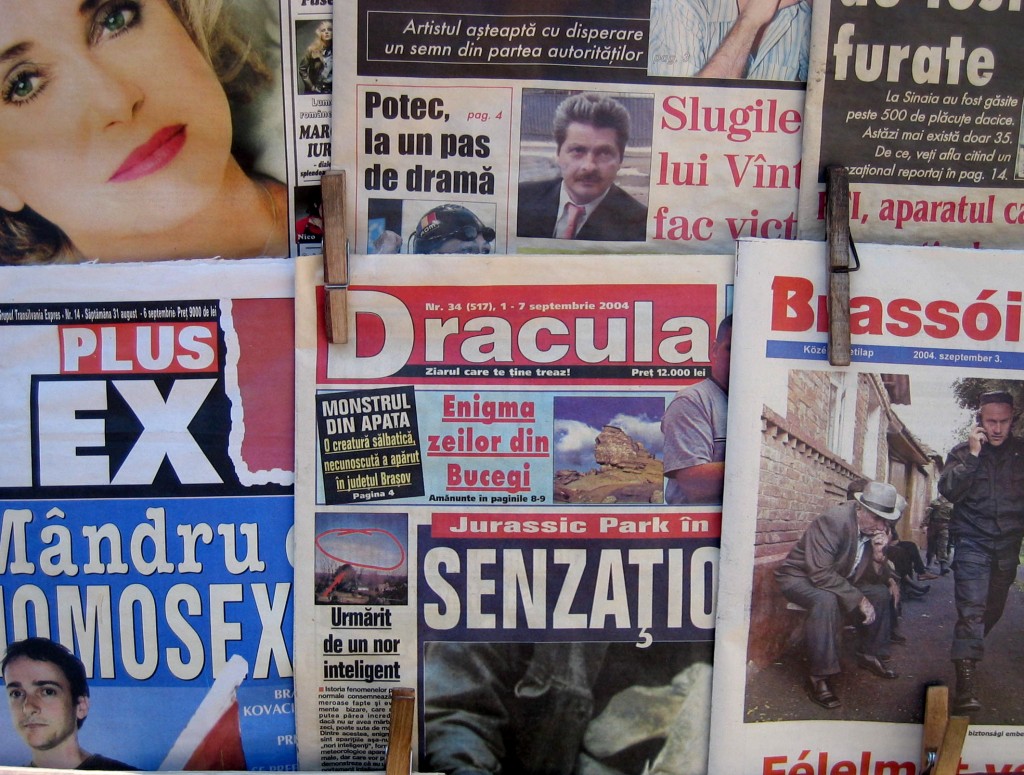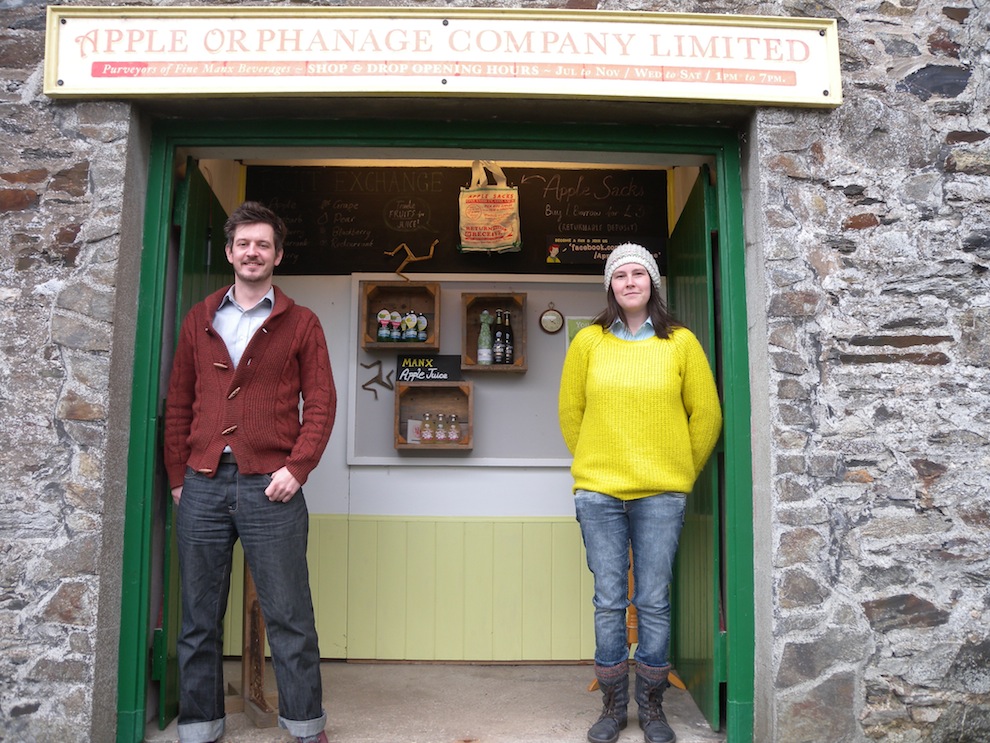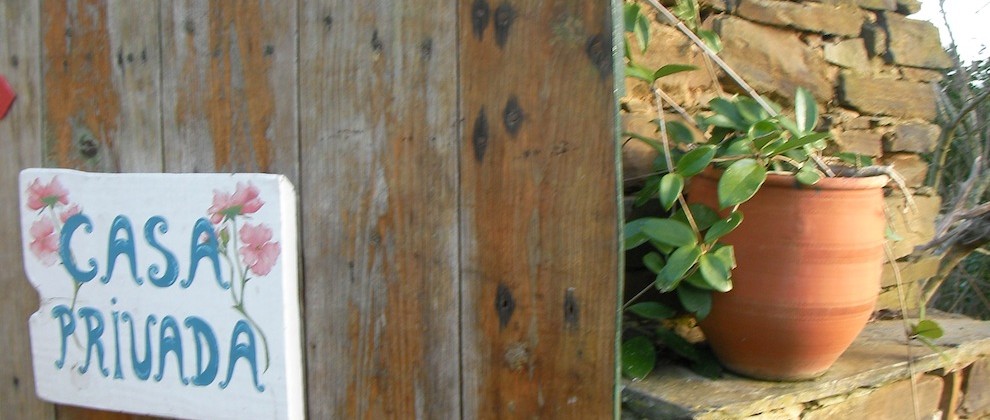
* We’re going right back into the archive this week for one of my first ever freelance commissions, based round a trip to Romania.
As ever, follow me on Twitter, or subscribe to the RSS, for weekly updates from my travel-writing archive in the months to come.
Gigi Popa really knows how to hold a tune.
Every night after dinner at his Zarnesti guesthouse, he cracks open the firewater plum schnapps, reaches for his battered old acoustic guitar and strums his way through a back catalogue of singalong favourites from Dylan to Elvis.
But, after the last guest standing drains his glass and the nocturnal mists roll down from the Transylvanian Alps to engulf the farmsteads, the rural heartland of Romania dances to a different tune: the call of the wolves.
“We are not afraid of the wolves and beers,” Gigi tells me, pausing for breath between schnapps-fuelled Romanian folk songs.
“But sometimes they come to the villages at night. If you chain up your dog,” he says, suddenly serious, “the next morning only the chain is left.”
Natural escape
Romania’s Carpathian Mountains, one of the largest natural ecosystems in Europe, is home to over 3,000 wolves, plus a healthy population of beers and lynx – the highest concentration of large carnivores in Europe.
For the first-time amateur carnivore spotter like myself, Romania offers a rare opportunity to leave London in the morning and be infringing on the personal space of critters with big teeth by dusk.
Indeed, with 586 protected areas and 13 national parks (the large majority within the Carpathian ranges), Romania offers a glimpse of an agrarian Europe frozen in time.
The Romanian government may be striving to shake off its Communist hangover and secure entry to the EU but, in Zarnesti, the access point to the southern Carpathians and 170km northwest of Bucharest, life has changed little since the Middle Ages.
Think wizened old crones in headscarves, transport by horse and cart, and the kind of indigenous local fauna that has little Red Riding Hood sleeping with the light on.
Hunting remains big business here with a 60kg adult wolf fetching about 1,000 euros on the open market. Bears were only protected during the Ceausescu years so that the erstwhile dictator could hunt them for sport.
Officially wolves have been protected since 1996 but European trophy hunters still find ways to secure permits by greasing the right palms at the local forestry administration.
“I came to Zarnesti because I’ve always been fascinated by the call of the wild, the power and strength of wolves,” says German-born Christoph Promberger, director of the Carpathian Large Carnivore Project (CLCP), an umbrella group running various ecotourism projects to foster the fledgling local tourism industry.
Now I’ve never come face to face to with a large carnivore before but Christophe assures me, as we drive over to visit the project’s field cabin, that there’s no need to be nervous.
“In the last 50 years, there have been only eight incidents involving wolf attacks and no fatalities,” he explains, showing me an angry scar on his hand.
“I’ve been within 2m of a wolf, eyeball to eyeball; it was exciting.”
He adds: “Wolves have neither the need nor the experience to attack humans.”
The cabin is home to two wolves rescued from a fur farm and now cared for by CLCP staff. Crai and Poiana, the ‘pet’ wolves, certainly seem friendly enough but we’ve come to answer the call of the wild.
And if we are to actually run with the pack, then we are going to need professional help.
Wolf tracker
Step forward German national Peter Sürth, wolf expert and animal tracker, who has been tracking wolves across Europe since the Seventies.
“As a tracker I try to get into the wolves’ heads, to feel their needs,” says Peter, as we head out from Zarnesti via the walled city of Brasov to the Ciucas Mountains in the southeast Carpathians.
“Wolves get a bad press simply because humans have lost contact with the forest.”
He adds, “But with European wolf numbers growing again, we need to learn to live together.”
At Babarunca, 60km from Zarnesti, the pot-holed road gives way to a rough dirt track, still wet from a thorough nocturnal dousing. We leave the jeep in a clearing and start to trek along the forest path.
The nearest civilisation suddenly feels a long way away. I’m sure the eyes of the animals are upon us.
“Wolves have a similar social system to humans,” explains Peter as we climb a steep, muddy track deeper into the Dengu forest. “They even raise and educate their puppies in a kind of wolf kindergarten to teach them about survival in the wild.”
Suddenly he stops dead. “Red deer kill,” he says, indicating a patch of hair and fragments of bones under a bush. The hefty imprint of a brown beer’s paw looks up at us mockingly from the mud.
“It’s fresh – within 12 hours,” says Peter, eyes scouring the horizon.
We follow the tracks through the dense foliage until, 45 minutes down the trail, Peter spots a set of wolf tracks, running down from the higher ground at an intersection in the forest glade.
“Even fresher and there’s at least a pair,” he says excitedly, poking around the ground with a stick.
“You can always tell wolf faeces due to the bits of hair and bone, plus the intensely strong smell,” he says, waving a stick thrust into fresh wolfy do-dos under my noise.
Suddenly I’ve lost my appetite for lunch, not to mention my earlier enthusiasm for getting up close and personal with some of our fury forest friends.
Not only can a wolf’s jaw exert double the pressure of a German Shepherd – that’s enough to break a deer’s neckbone in one good, clean bite – but their poo smells worse than the morning after a night of Guinness and chicken vindaloo.
But there’s no turning back now. “Come on,” says Peter. “I think we’re getting close.”
Forest clearing
As we reach a ridge looking back over the forest, the trail goes cold. We push on, emerging into a meadow with a sweeping panoramic vista across the Ciucas Mountains, but the only wildlife in evidence are Ionut and Ioan, two teenage boys trundling through the ancient forest on a horse and cart.
As the afternoon passes, we complete a full circle, ending up back at the clearing with the detritus of the deer kill.
The animals must have seen us coming all along.
But, before we head for home, Peter has one last trick up the sleeve of his fleece: it’s time for my wolf-howling tutorial.
“Howling stabilises the social system amongst wolves. It brings them together to give them strength – a bit like humans when we sing,” explains Peter.
And with that, he throws back his head, fills his lungs and lets out a piercing primal scream that ricochets off the mountains like a stray bullet at a Romanian Mafia shoot-out.
Peter looks hopeful. “We’re not just telling the wolves, ‘I’m here,’ but also asking, ‘Where are you?’”
I cup my hands around my mouth and muster up a low, guttural howl. We wait. And wait. The silence of the forest is almost deafening.
Back in the jeep, heading back to Zarnesti, the mood is a muted. “I’ve seen wolves up close less than 20 times in seven years working in the area,” says Peter.
“That’s why there are so few wolf attacks. The wolves are far smarter at avoiding us then we are at finding them.”
At the guesthouse, Gigi is waiting for us with cold beers and words of encouragement. As he cracks open the plum schnapps that night, he tells me of his own tracking adventures as a young man.
“Before the revolution, I would often go into the forest to be with the animals,” he smiles.
“The wolves and beers were my friends.”
The forest animals may guard their privacy from rubbernecking foreigners but, for the avuncular Gigi Popa, they happily come out to play.
Perhaps they realise that passing strangers like me are just the proverbial wolves in sheep’s clothing.
* This story was first published in O Magazine in 2003. Liked this? Try Meeting a real life count in Transylvania.
And post your comments below.


